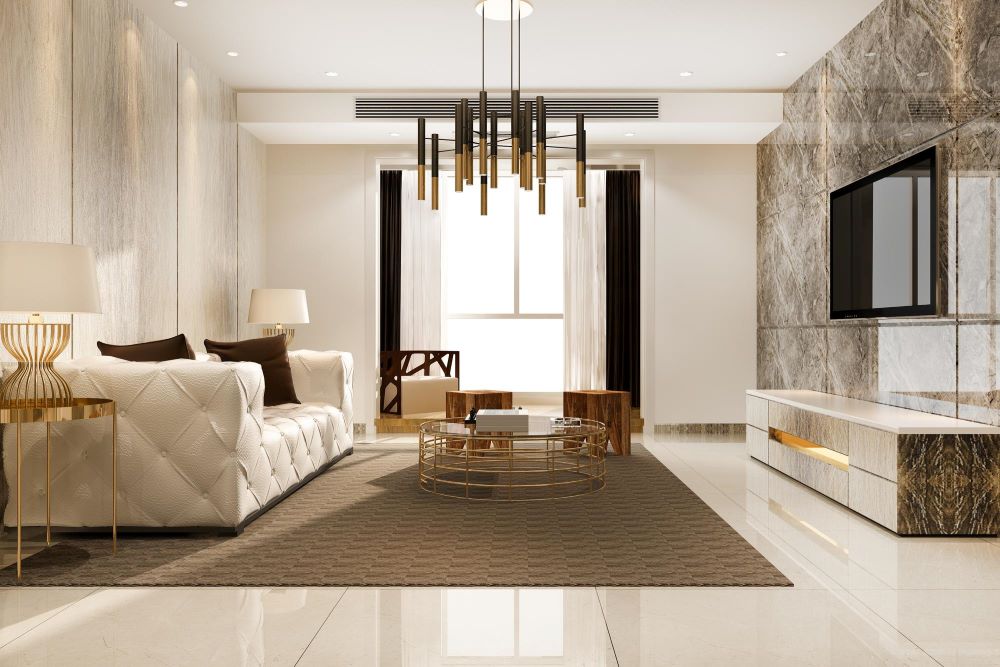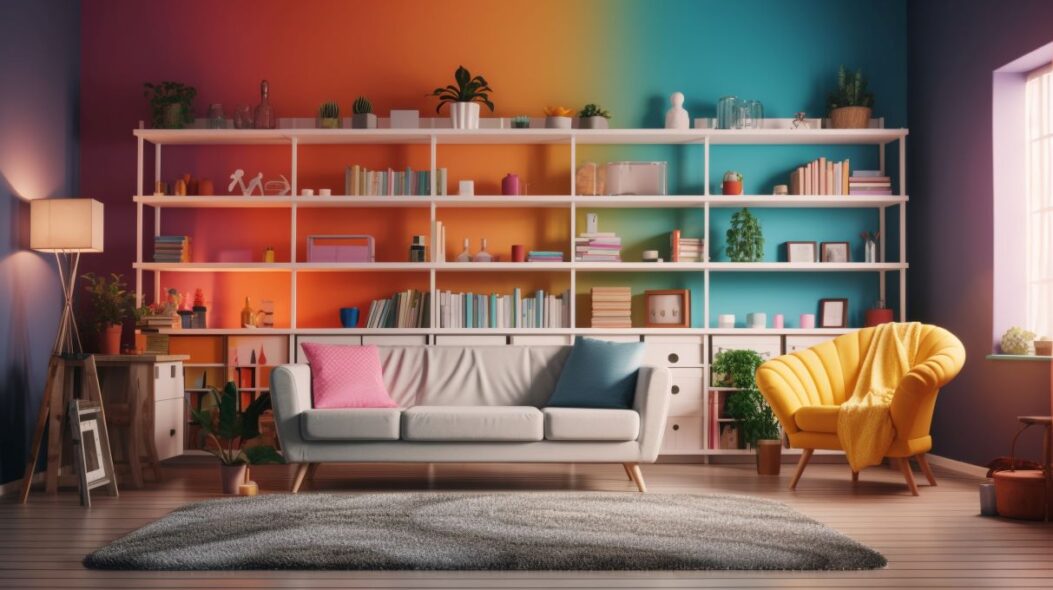A local gem who has appeared in nearly every form of media, Dr. Eric Leong is a renowned celebrity designer who has hosted dozens of TV shows, published books, and collaborated with well-known brands such as Watsons.
Dubbed Malaysia’s design king, he now dedicates most of his time to teaching as the head of the Interior Architecture & Design School at The One Academy, where he shares his 30 years of experience with emerging interior designers and artists.
In this post, Dr. Eric Leong generously shares his top interior makeover tips for Malaysian homeowners who are renovating or refreshing their homes.
Here’s What We Learned
Stop! Plan First, Then Design
You might already be picturing your dream home in your mind, but before you dive into design, consider how your home will fit into your current lifestyle. A space that supports your everyday living is just as important—if not more so—than the aesthetic appeal alone.
As Dr. Eric advises:
“First thing first: the needs and the practicality. Don’t just blindly follow design trends, as you are the one who will live in your house and use it daily; therefore, it must be practical and reflect your lifestyle.”
— Dr. Eric Leong
Start by envisioning how your ideal style will mesh with your day-to-day activities. Adjust your ideas to accommodate areas in your home that might otherwise clash with your lifestyle. Remember, maintaining a balance between functionality and design aesthetics is crucial.
Get Brainstorming
The first step in interior design is to explore as many ideas as possible. Whether you have a clear vision or are just beginning to imagine what each room might look like, brainstorm every aspect of interior design. Consider elements such as:
- Porcelain floor and wall tiles
- Color schemes
- Furniture
- Lighting fixtures
- Soft furnishings
- Decorative accents
- Mood and atmosphere
Write down every detail. Dr. Eric recommends using Pinterest as an excellent source of inspiration—a platform where you can discover thousands of interior spaces and the latest design trends.
When you find something that resonates with you, re-pin it to your Pinterest board and label it by room (e.g., “Living Room”) so you can see how it fits into your overall plan. This method helped Dr. Eric develop his creative skill set; as a teenager, he was captivated by beautifully arranged product displays and merchandise, which eventually inspired his own designs.
When asked what advice he would give his younger self, Dr. Eric once remarked:
“During my era, resources were very limited—you needed to travel to see designs, and that required a lot of money. I would advise my younger self to work harder to earn more so I could travel and seek inspiration.”
— Dr. Eric Leong
Gather as many ideas as possible and don’t hesitate to explore. Use the wealth of inspiration available online, and give yourself ample time to settle on the perfect concept.
Budget, Budget, Budget
With a list of design ideas in hand, the next critical step is establishing a definitive budget. The size of your budget will directly influence the materials, furniture, and fixtures you can use.
Dr. Eric explains the process for creating a master list:
- Create a wishlist: Include everything you desire.
- Set a budget: Develop a list of necessities—furniture, bedding, appliances—along with their costs. This becomes your master list.
- Review your budget: If funds remain after listing necessities, add select items from your wishlist to the master list.
- Stick to your plan: Follow your master list closely during the renovation to stay on budget.
Note: If you hire an interior designer, include their fees and those of any contractors in your overall budget.
On Hiring an Interior Designer
If you plan to hire an interior designer, consider these steps to ensure you choose someone reliable:
- Review their portfolio: Look at their previous work to determine if their style aligns with your vision.
- Engage in conversation: Have a chat to see if you feel comfortable with them. A good rapport is essential.
- Monitor progress: During renovation, supervise the site regularly to catch and correct any contractor errors—especially in high-traffic areas like the corridor.

Dr. Eric Leong’s 8-Step Approach to Interior Design
Managing budgeting, material shopping, and design can feel overwhelming. Dr. Eric’s eight-step approach simplifies the process of creating your dream home:
Determine the Interior Style
Organize your ideas to create a mood or vibe that resonates with you. Each room can have a unique personality. For instance, a minimalist, modern living room might contrast with a playful theme in a child’s bedroom.
“As long as the room has a door to separate itself from other rooms, it doesn’t have to mirror the other areas. However, open spaces like the living and dining areas should be united under one concept or mood,” he explains.
Currently, the Scandinavian style—characterized by light-colored wood furniture, soft hues, and inviting aesthetics—is popular, but it’s important to choose a style that speaks to you.
Create a Colour Scheme
Select a color palette that sets the desired mood in your room. Dr. Eric advises against using dark colors on all walls since they can make a room feel cramped.
Instead, use a darker tone on a feature wall to add depth, while keeping the rest of the walls lighter. For instance, muted colors work best with the Scandinavian style, creating a harmonious balance.
Identify a Feature Wall
The feature wall is the first wall visible when entering a room, so it should make a strong impression. The most subtle method is to use a darker shade of your chosen color.
Alternatively, add texture with tiles, geometric wall art, or patterned wallpaper. If you’re feeling adventurous, consider a wall painting or an accent color that deviates from your main palette.
Surrounding walls should complement the feature wall with neutral or pastel hues. Incorporating elements like glass shelves or accents can further elevate the modern look.
Select Furniture
Prioritize functionality when choosing furniture. Balance practicality with aesthetics. Once you’ve listed your needs, select pieces that match your style and budget.
Select Lighting
Dr. Eric emphasizes that lighting should be planned according to the room’s function. Use warm lighting to create ambiance and daylighting for tasks. Generally, a central ceiling or pendant light serves as the primary source, while table or floor lamps provide supplemental lighting.
Don’t forget to take advantage of natural light from windows, and place supporting lights in room corners to maximize soft reflections.
Select Soft Furnishings
This category includes pillows, curtains, linens, towels, bedspreads, and other textile-based items. Ensure that your choices support your lifestyle and complement your overall color scheme.
Select Decorative Accessories
For visual impact, Dr. Eric recommends using larger, statement accessories placed at strategic “hotspots” where visitors are most likely to notice them. If you choose smaller items, group them together to create a more pronounced effect. All decor should align with your interior style.
Freshen Up the Room as the Final Touch
Add life to your home with elements that refresh the space—consider fresh flowers or potted plants. To extend the outdoor living space, consider transforming your terrace with a blend of comfortable seating and lush greenery. For those looking to expand on this theme, there are many creative options available.

Final Words
Effective planning is essential when designing a home. The process of building and designing should be both exciting and personal. For new homeowners, setting a budget is the first crucial step before delving into design details.
Building your dream home? Discover the best deals on branded interior design and home construction materials at HOMA2u—the first online and offline construction material marketplace in Malaysia.


